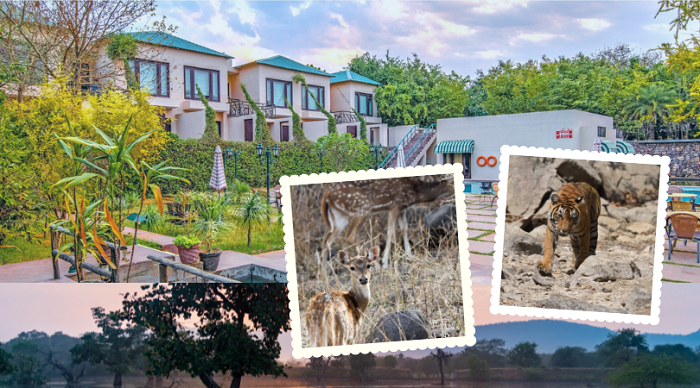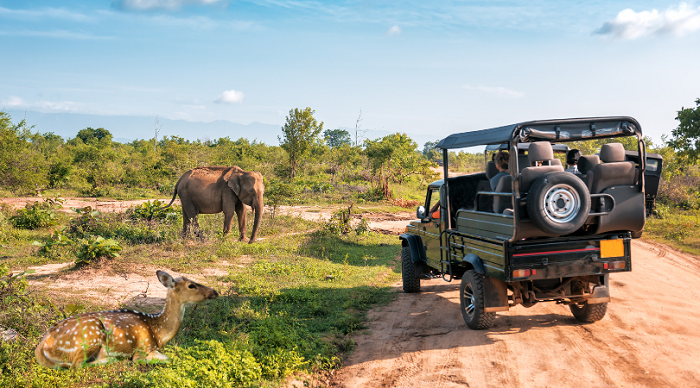 May 28, 2024
May 28, 2024
Interesting Places in Ranthambore
The distance to Ranthambhor National Park is 14 kilometers from Sawai Madhopur.The Ranthambhor Fort, which is located within the park’s boundaries, is where the park gets its name.
The park, which spans 392 square kilometers and features thick forests, waterfalls, and nullas, is an amazing example of a precariously balanced arid ecosystem. It is surrounded by the Vindhya and Aravalis. The park is located amid vast arid and denuded tracts of Rajasthan’s desert ecology.
Because of the park’s steep terrain, water is only found in small valleys and a few lakes, and the vegetation is primarily tropical dry deciduous and tropical thorn forest types. Dhok, Flame of the Forest, Ber, Aam, and Acocia lenco phleea are among the significant tree species. Lots of lotuses and nymphaeas may be found in the wildlife haven of Rajbagh, Padam Talab, and Malik Talab lakes.
The park’s glory is its herd of sambar deer, which also contains blue bulls, chinkaras, and chital.These largest of all Asiatic deer may be observed so regularly during the jungle safari in Ranthambore in no park in Asia. Among the reptiles, wild boars and langurs are frequently sighted, while crocodiles can be spotted sunbathing close to lakes.
The park’s primary attraction is the tiger.Naturalists claim that one of the best parks in the nation for seeing and capturing tiger activity is Rathambhor. There are also fox, caracal, jungle cat, jackal, hyena, leopard, and ratel among the other carnivores in the park. It is estimated that the park is home to about 80 sloth bears.
The Sawai Man Singh Sanctuary in the south and the Kaila Devi Sanctuary in the northeast, both of which are well-known for their tigers, have recently been included to the Rathambhor National Park. The 676 square kilometers of Kaila Devi’s dry deciduous forest. Aside from the tiger, other animals that can be seen by guests include the blue bull, fox, hyena, sambar, chital, jackal, crocodile, gavial, and other birds.
Ranthambore Fort:
Open from dawn to nightfall, the Fort spans many kilometers and tops the list of interesting Places in Ranthambore.In addition to being a unique location for bird watching, leopards occasionally visit the area. A sense of the Park’s size is provided by striking vistas of the lakes and the woodland below. On sometimes, the top of the fort offers views of tigers as well. It’s constantly open for visits in between park drives. It is forbidden to stroll within the National Park; the Ranthambhore Fort is the only area where you can do so. The Ganesha Temple is 20 minutes’ walk away, and the neighborhood is filled with historic water tanks, chhatris, palaces, and mosques.

Padam Talao:
It’s one of the most interesting Places in Ranthambore to spend time observing crocs, deer, and birds at this lake while lounging in the shade with a set of binoculars. Pintails can be observed diving ‘bottoms up’ seeking fish, while jacanas cautiously walk on lily pads. Crocs, who appear motionless at first but become ferociously swift when a hunting opportunity arises, have been known to take sambar deer. It’s possible that what you initially believed to be a boulder near the lake could actually be a giant soft-shelled turtle that has decided to give up its sun bath.
Raj Bagh
Extremely overshot! However, every photographer—professional or amateur—should be able to capture breath-taking pictures of serene lakes surrounded by the remnants of historic hunting lodges. After all, every eye is fresh. This is as close to heaven as you will ever get, day or night.
If you are looking for one of the best hotels in Ranthambore Rajasthan to stay then choose Ranthambhore Kothi. It is a luxurious resort that give splendid views of the Aravalli Hills. Plus it is surrounded by lush greenery where you can go on nature walks as well.